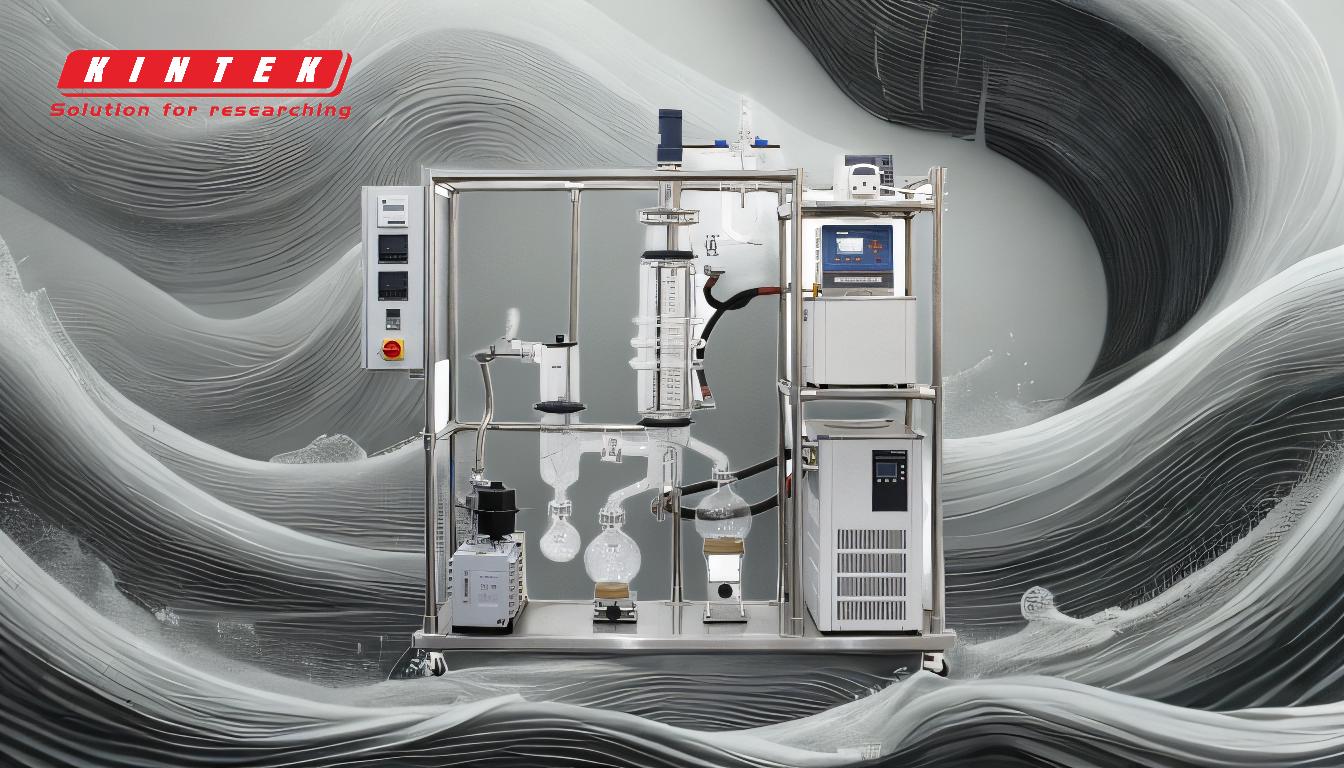Molecular distillation is an advanced separation technique used to purify and concentrate thermally sensitive and high molecular weight materials. It operates under high vacuum conditions, ensuring low temperatures and short residence times, which prevent thermal degradation. The process relies on the difference in the mean free path of molecules, where lighter molecules with longer mean free paths evaporate, travel a short distance, and condense on a separate surface, while heavier molecules return to the liquid phase. This method is widely used in industries such as pharmaceuticals, food, and cosmetics for separating and purifying delicate compounds like fish oil, vitamins, and essential oils. The technique is highly efficient, energy-saving, and preserves the integrity of heat-sensitive materials.
Key Points Explained:

-
Principle of Molecular Distillation:
- Molecular distillation is based on the difference in the mean free path of molecules. The mean free path is the average distance a molecule travels before colliding with another molecule.
- Under high vacuum conditions, the mean free path of molecules increases, allowing lighter molecules to escape the liquid surface and condense on a nearby surface, while heavier molecules return to the liquid phase.
- This separation occurs without boiling, as the process operates at temperatures below the boiling point of the materials, making it ideal for thermally sensitive compounds.
-
Operating Conditions:
- High Vacuum: The process requires a high vacuum to reduce the pressure, which increases the mean free path of molecules and minimizes intermolecular collisions.
- Low Temperature: The low operating temperature prevents thermal degradation of sensitive materials, ensuring the preservation of beneficial compounds.
- Short Residence Time: The short time spent in the heating zone further reduces the risk of thermal damage.
-
Process Mechanism:
- The feed material is introduced into a heated vessel, where it flows down the walls and is spread into a thin film by rotating wipers.
- The liquid film evaporates due to heat, and the vapors travel a short distance to a condensing surface.
- Light molecules with longer mean free paths reach the condenser and are collected as the product, while heavy molecules with shorter mean free paths return to the liquid phase and are recirculated for further distillation.
-
Applications:
- Pharmaceuticals: Used for purifying heat-sensitive drugs and active pharmaceutical ingredients (APIs).
- Food Industry: Applied in the concentration and purification of fish oil, vitamins, and essential oils.
- Cosmetics: Utilized for extracting and purifying delicate compounds used in skincare products.
-
Advantages:
- Preservation of Heat-Sensitive Compounds: The low temperature and short residence time ensure that thermally unstable molecules remain intact.
- High Purity: The process effectively removes contaminants, resulting in high-purity products.
- Energy Efficiency: The unique design of molecular distillation devices, such as rotating film systems, ensures efficient separation with minimal energy consumption.
-
Safety Considerations:
- The process involves handling flammable materials under high vacuum, which can be hazardous.
- Proper safety measures, such as explosion-proof equipment and careful handling, are essential to mitigate risks.
-
Equipment Design:
- Molecular distillation devices typically feature a heating jacket, rotating wipers, and a condenser.
- The rotating wipers create a thin film of the feed material on the heated surface, enhancing evaporation efficiency.
- The condenser is positioned close to the evaporation surface to ensure that the vapors travel a short distance before condensing.
-
Efficiency and Energy Consumption:
- The process is designed to minimize heating time and energy consumption, making it a cost-effective solution for large-scale industrial applications.
- The efficient separation of compounds reduces the need for multiple distillation steps, further saving energy and resources.
By understanding these key points, equipment and consumable purchasers can make informed decisions about the suitability of molecular distillation for their specific applications, ensuring the preservation and purification of valuable compounds.
Summary Table:
| Aspect | Details |
|---|---|
| Principle | Separation based on molecular mean free path under high vacuum conditions. |
| Operating Conditions | High vacuum, low temperature, short residence time. |
| Applications | Pharmaceuticals, food industry, cosmetics. |
| Advantages | Preserves heat-sensitive compounds, high purity, energy-efficient. |
| Safety Considerations | Requires explosion-proof equipment and careful handling. |
| Equipment Design | Heating jacket, rotating wipers, condenser for efficient separation. |
Discover how molecular distillation can enhance your processes—contact us today for expert guidance!










